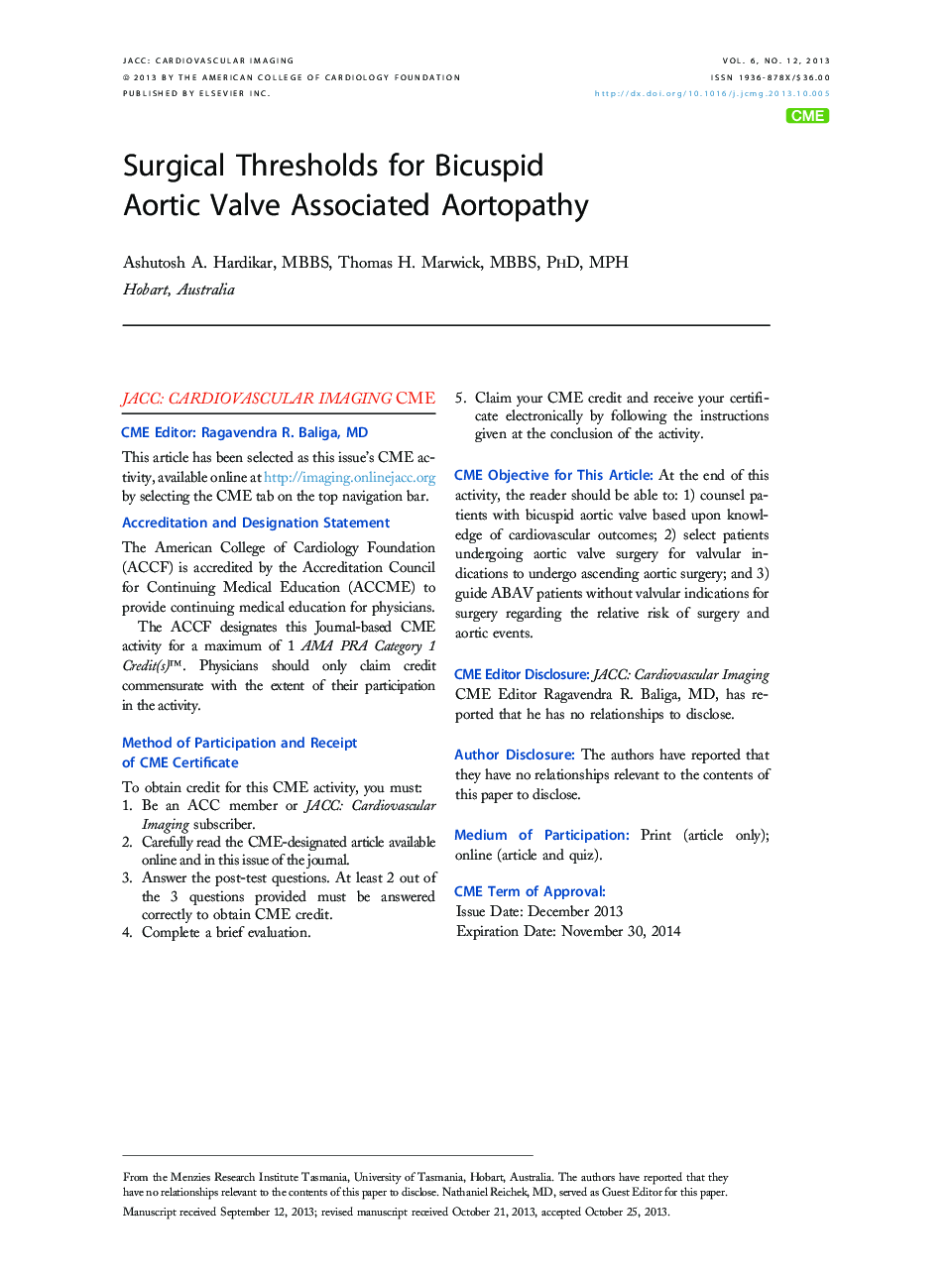| کد مقاله | کد نشریه | سال انتشار | مقاله انگلیسی | نسخه تمام متن |
|---|---|---|---|---|
| 2938281 | 1176931 | 2013 | 10 صفحه PDF | دانلود رایگان |

ObjectivesThis systematic review seeks to present the outcomes of the natural history of aortopathy associated with bicuspid aortic valve (ABAV) and after interventions.BackgroundAortopathy is common in patients with ABAV, and early intervention has been proposed to reduce the risk of dissection. In asymptomatic patients, the timing of surgical management is based upon imaging of aortic size, but the actual threshold is based upon observational data and expert opinion. As evidence of high risk would justify early intervention, we sought to define the natural history of this condition and after interventions.MethodsWe undertook a systemic review of the evidence from observational studies of ABAV published up to June 2013. The primary outcome was annualized all-cause mortality. Secondary outcomes included acute aortic events, rates of aneurysm enlargement, and peri-operative complications. A random-effects model was used to combine outcomes. A meta-regression was undertaken to assess the impact of potential covariates.ResultsThe 32 eligible papers involved 11,045 patients (9,441 BAV and 1,604 control subjects, age 46 ± 14 years). There were 3 major groups, nonoperated bicuspid aortic valve (BAV) patients (ages from 30 to 40 years), patients after aortic surgery (generally 40 to 60 years of age) and after isolated valve replacement (>60 years of age). The respective annualized mortality of nonoperated BAV patients was 0.56% (95% confidence interval [CI]: 0.13 to 0.99), compared with 0.78% (95% CI: 0.20 to 1.36) in patients after aortic surgery and 2.39% (95% CI: 1.61 to 3.16) after isolated valve replacement. The annualized acute event rate in nonoperated BAV patients was 0.29% (95% CI: 0.23 to 0.35), this risk being no different from that of a tricuspid aortic valve (risk ratio: 0.68, 95% CI: 0.34 to 1.36). In the post-surgical series, 30-day mortality varied from 0% to 2.5%, and the risk of acute events was 0.16% (95% CI: 0.0 to 0.32) in patients after aortic surgery and 0.68% (95% CI: 0.42 to 0.94) after isolated valve replacement. Aortic dilation was at a rate of 0.16 mm/year over 6 decades in healthy BAV subjects and 1.1 ± 0.15 mm/year in older aortic valve replacement patients.ConclusionsThe risk associated with ABAV varies according to age and clinical setting. Nonetheless, despite aortic dilatation, the acute aortic event risk of ABAV appears low in current practice. Decision-making regarding the timing of intervention needs to be made on the basis of the balance between this low risk and both the morbidity and mortality of surgery.
Journal: JACC: Cardiovascular Imaging - Volume 6, Issue 12, December 2013, Pages 1311–1320